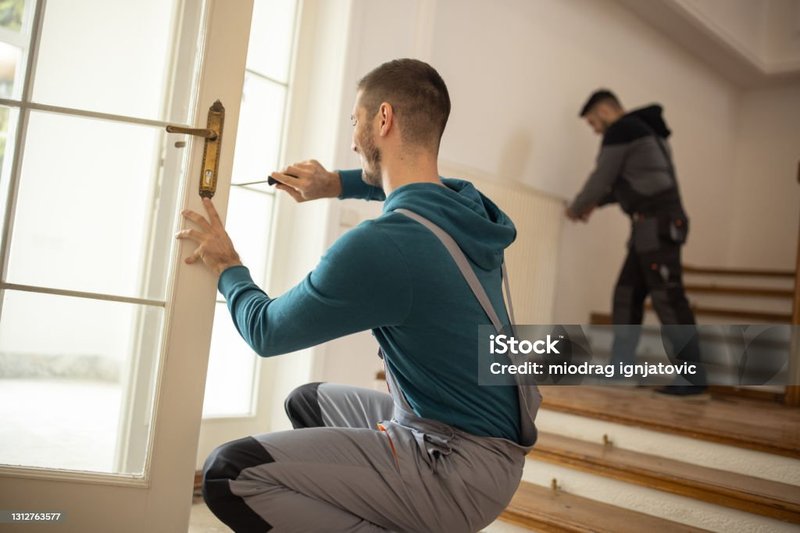
Understanding why a door knob feels that way can be essential for homeowners. That annoying feeling often signals a problem with the internal mechanism of the knob, like worn-out parts or the need for a little lubrication. And believe me, you’re not alone in this! Many people face this issue, and luckily, it’s something you can tackle yourself. In this guide, we’ll explore how to identify the problem and fix that pesky grind once and for all.
Identifying the Problem with Your Door Knob
The first step in addressing that grind is figuring out what’s actually causing it. Sometimes, the issue is obvious—other times, you might need to dig a bit deeper.
Common Causes of a Grindy Door Knob:
- Worn-Out Components: Over time, the internal parts of the door knob can wear down, leading to friction and that annoying grind.
- Lack of Lubrication: Just like a car needs oil, door knobs benefit from a bit of grease to keep things moving smoothly.
- Misalignment: If the door or knob has shifted, it can lead to parts rubbing together improperly.
You might be wondering, “How do I figure out which one it is?” A good way to start is by examining the knob closely. Check for any visible signs of wear or if it feels unusually loose.
Gathering Your Tools and Supplies
Now that you know what to look for, let’s gather everything you’ll need for the repair. Here’s a quick list:
- Screwdriver: A basic Phillips or flathead, depending on your knob type.
- Lubricant: Silicone spray or a light oil works well.
- Replacement Parts: If you find any damaged pieces, you may need to replace them. Local hardware stores usually have everything.
Having the right tools at hand makes the process smoother. It’s like preparing for a recipe—you don’t want to be searching for an ingredient halfway through!
Disassembling the Door Knob
Before you dive into repairs, it’s crucial to *disassemble* the door knob properly. Don’t worry; it’s not as daunting as it sounds. Here’s a step-by-step guide:
1. Locate the Screws: Look for screws on the inside of the door knob or hidden beneath a decorative plate.
2. Unscrew the Knob: Using your screwdriver, carefully remove the screws. Sometimes, a bit of force is needed if they’ve been in place for years.
3. Take Off the Knob: Gently pull the knob apart. If it’s sticking, wiggle it slightly until it comes free.
Keep track of the pieces as you take them apart. A little plastic bag can help keep everything organized. Trust me, a disorganized workspace can turn a simple fix into a scavenger hunt!
Lubricating the Mechanism
Now that you’ve got the knob disassembled, it’s time to give it some TLC. Lubrication can often resolve that grind instantly. Here’s how to do it:
1. Apply Lubricant: Spray or drop a small amount of lubricant onto the internal mechanism of the knob. Don’t overdo it; you just need enough to coat the moving parts.
2. Work It In: Turn the knob a few times to allow the lubricant to spread and penetrate the moving parts.
3. Wipe Excess: Use a cloth to clean off any excess lubricant that might have dripped. You don’t want it attracting dust or dirt later on.
Think of it this way: just like a well-oiled machine runs smoothly, your door knob will feel much better with a little lubrication.
Checking for Misalignment
After lubricating, check for misalignment. Sometimes, if a door knob feels off, the issue isn’t just internal. Here’s how to assess:
1. Close the Door: Shut the door and observe how the knob lines up with the strike plate on the frame.
2. Look for Gaps: If there’s a noticeable gap or if the knob is hitting the frame, it may need adjustment.
3. Adjust the Hinges: Tightening or loosening the hinges can help realign the door. Play around until everything feels balanced.
Fixing misalignment can be a bit of trial and error, but it’s worth it to ensure your door operates smoothly.
Reassembling the Door Knob
Once you’ve tackled lubrication and alignment, it’s time to put everything back together. Here’s what you need to do:
1. Align the Knob: Place the knob back into its original position. Ensure that all parts fit snugly together.
2. Screw It Back In: Use your screwdriver to secure the screws back in place. Make sure they’re tight, but don’t overtighten.
3. Test the Knob: Before finishing up, give the knob a turn. It should feel smooth without any grinding.
Reassembling might feel like the final chapter of a book, but it’s always worth checking your progress before closing the book!
When to Replace the Door Knob
Sometimes, repairs just don’t cut it. If your door knob is still grinding after all this, it might be time for a replacement. Here are some signs it’s time to let go:
- Severe Wear: If the knob is visibly damaged or worn down, it may be time to invest in a new one.
- Persistent Grinding: If lubrication and adjustments didn’t help, something more serious could be wrong.
- Outdated Style: Sometimes, you just want a fresh look for your space!
Replacing a door knob is straightforward. Most come with easy-to-follow instructions, so you won’t feel lost during the process.
Repairing an interior door knob that feels “grindy” doesn’t have to be a daunting task. With a bit of patience and the right tools, you can bring comfort back to your home. Remember to keep an eye on the condition of your door knobs, and don’t hesitate to tackle repairs or replacements when necessary.
By taking the time to understand the mechanics of your door knob, you can ensure that every turn is as smooth as possible. So grab that screwdriver and lubricant, and enjoy the satisfaction of a job well done!
